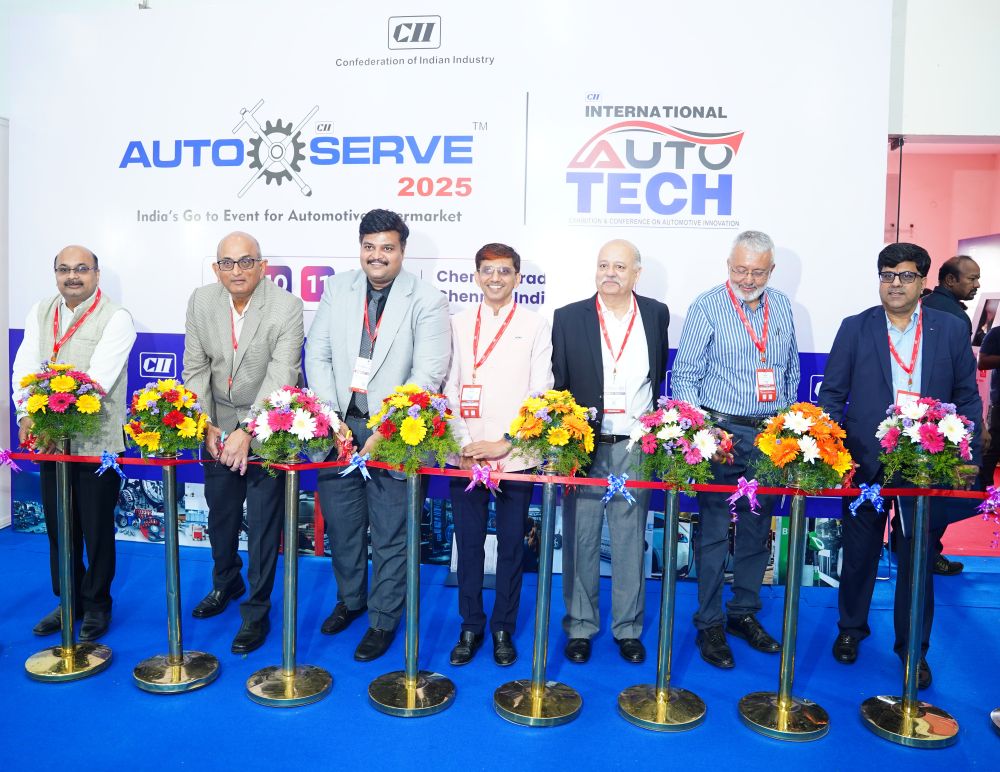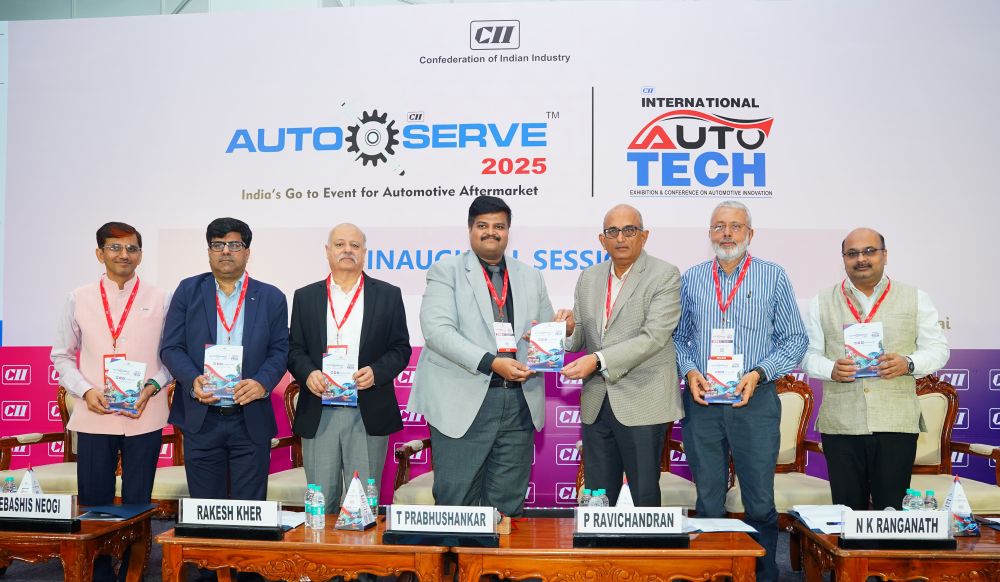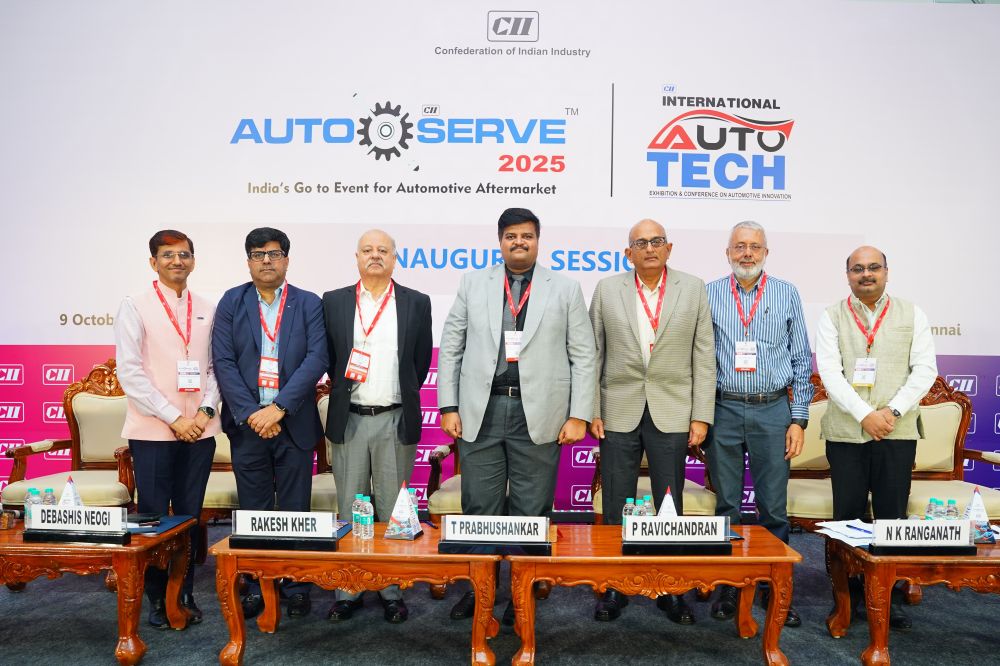The 11th edition of CII AutoServe 2025, organised by the Confederation of Indian Industry (Southern Region), has set the stage for transformative discussions on the future of India’s automotive aftermarket. With the twin themes—“Driving the Next Decade: Innovation, Integration, and Intelligence in the Automotive Aftermarket” and “Accelerating Innovation: Smart, Sustainable, and Software-Driven Mobility”—the event brought together key stakeholders from government, industry, and academia to explore how technology, sustainability, and collaboration can redefine India’s mobility landscape.

Inaugurating the conference, Dr. T Prabhushankar, IAS, Managing Director, Metropolitan Transport Corporation (Chennai) Limited, Government of Tamil Nadu, highlighted Tamil Nadu’s leadership in industrial growth and innovation. “Our strength lies in our manufacturing base and in our ability to evolve continuously. Tamil Nadu has always been a responsive and entrepreneur-friendly state that actively supports industrial growth and innovation. The state has the largest number of factories and MSMEs in India—an ecosystem built on trust between government, industry, and people,” he said.

Dr. Prabhushankar reaffirmed that the Government of Tamil Nadu remains committed to creating a transparent and enabling business environment that fosters entrepreneurship, job creation, and sustainable growth. “We cannot afford to stagnate; we must innovate constantly and collaborate to build a stronger aftermarket ecosystem that supports both quality and livelihoods,” he added. He also emphasised that the automotive aftermarket is not just an economic pillar but also a crucial enabler of public service delivery and employment generation, calling upon stakeholders to translate discussions into actionable policy recommendations.

Mr. P. Ravichandran, Deputy Chairman, CII Southern Region & President, Danfoss Industries Pvt Ltd, underscored the need to accelerate competitiveness through innovation and technology. “Our focus must be on strengthening manufacturing competitiveness, deploying AI and automation across MSMEs, and building a deep culture of innovation and circular economy. We must reimagine speed as the new currency of competitiveness,” he said.
Mr. Debashis Neogi, Chairman, CII International AutoTech Conference & Managing Director, Renault Nissan Technology & Business Centre India, noted that India’s automotive industry is undergoing a historic transformation, emerging as the world’s third-largest passenger car manufacturer, second-largest two-wheeler producer, and largest three-wheeler market. “With rapid advancements in autonomous driving, connectivity, and electrification, vehicles are transforming into ‘internet on wheels,’ powered by India’s strong IT and automotive ecosystem contributing nearly 15% to the GDP,” he stated.
Highlighting the vast potential of India’s automotive aftermarket, Mr. Ramashankar Pandey, Social Defence Fellow (Indian Administrative Fellowship) & Director (NED), Paracot Products Ltd, said, “India’s aftermarket touches millions of livelihoods and deserves the same recognition and structure as the core automotive industry. We must organise, standardise, and digitise this vast ecosystem—where every mechanic, workshop, and supplier becomes part of a trusted, quality-driven network.” He advocated for a strong right-to-repair framework, greater skilling initiatives, and digital integration to make the aftermarket a powerful engine for employment and safety.
Mr. Rakesh Kher, Chairman, CII Automotive Aftermarket Conference & CEO – Aftermarket and Group Chief Strategy Officer, Uno Minda Ltd, outlined the scale and evolution of the sector. “India is already sitting on an automotive aftermarket potential of roughly ₹1,00,000 crore—the lifeline of mobility for millions. Over the past decade, the industry has transformed from printed catalogues to digital platforms, from mechanical repairs to telematics and OBD-based servicing, and from fragmented supply chains to organised, automated warehouses. With BIS standards, ESG practices, and remanufacturing initiatives, the aftermarket is entering an era of organized, technology-driven, and sustainable growth,” he said.
Adding a perspective on growth prospects, Mr. N. K. Ranganath, Past Chairman, CII Tamil Nadu, stated, “In 2023, the aftermarket was valued at around $13 billion and is projected to reach $21.6 billion by 2030, growing at a CAGR of 7%. Passenger vehicle sales, too, are expected to rise from five million in 2024 to over 8.3 million by 2030, naturally driving the demand for parts, accessories, and services.”
The three-day AutoServe 2025 event features over 75 exhibitors, including a Japan Country Pavilion, 11 sectoral associations, and 10 media partners. With live demonstrations, technology showcases, and expert panel discussions on AI, IoT, EV maintenance, and remanufacturing, the event is expected to attract over 12,000 business visitors from India and abroad.
AutoServe 2025 thus positions itself as the definitive platform shaping the next decade of India’s automotive aftermarket—one that thrives on innovation, integration, and intelligence.




